

.jpg)
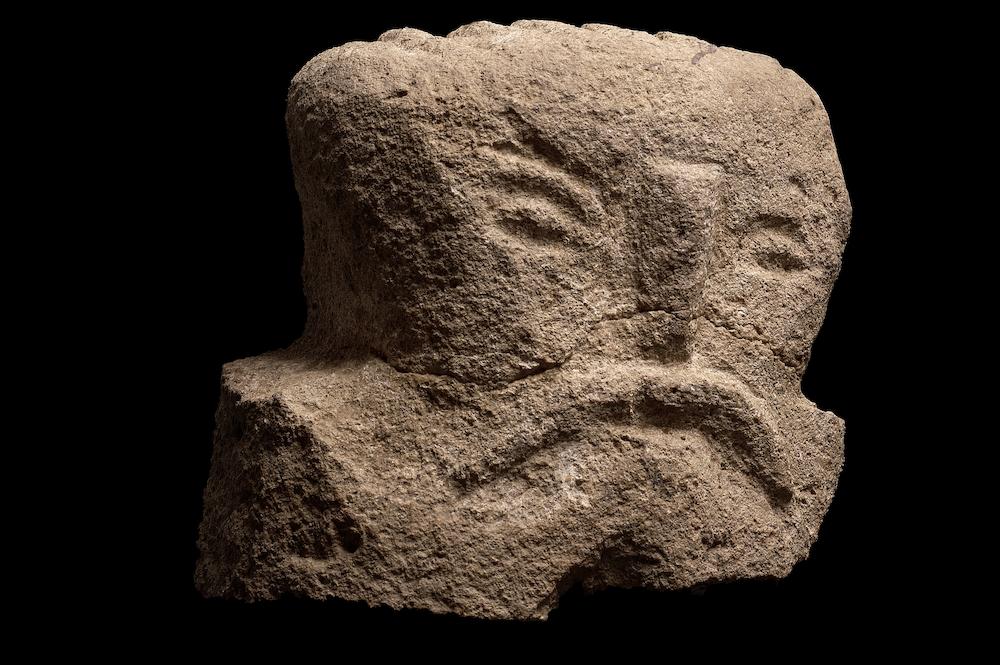
(3/ )
2nd Iron Age [- 480/ - 50]
Face Geometry
Cthis male head probably belonged to a stela of human form. The various elements of the face, rendered in a play of relief and hollows, are stylized in a manner peculiar to'Celtic art: curved eyebrows, almond-shaped eyes, trapezoidal nose, and hanging whiskers. Their presence is enough to bring out the personality of a high-ranking individual, warrior or hero. The schematic treatment of this head and the rough appearance of the stone probably reflect a deliberate intent on the part of the artist, not clumsiness.
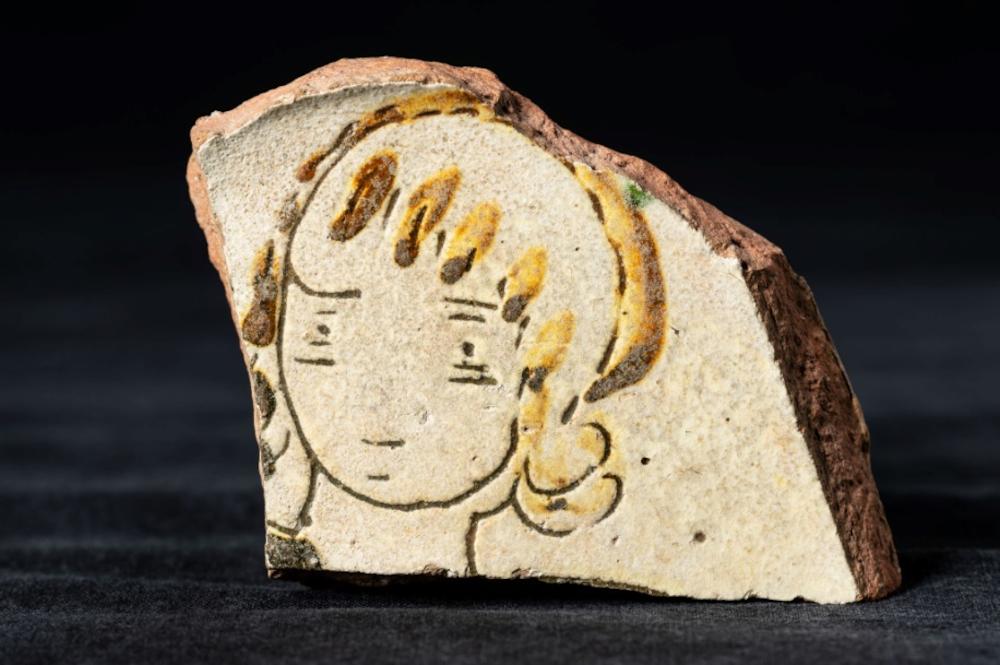
(4/ )
Modern period [1492 / 1789]
A sketch of land
Scales in the Marseilles area constituted in the seventeenthe and XVIIIe centuries of everyday objects. Their production was simple and quick, as was their decoration, often a tulip or bird. The human face, a rare motif, is treated with the same economy: the clay is covered with a beige glaze that the craftsman scratches with a point to trace the chin, eyes, mouth. A few drops of diluted iron oxide bring out the hair.
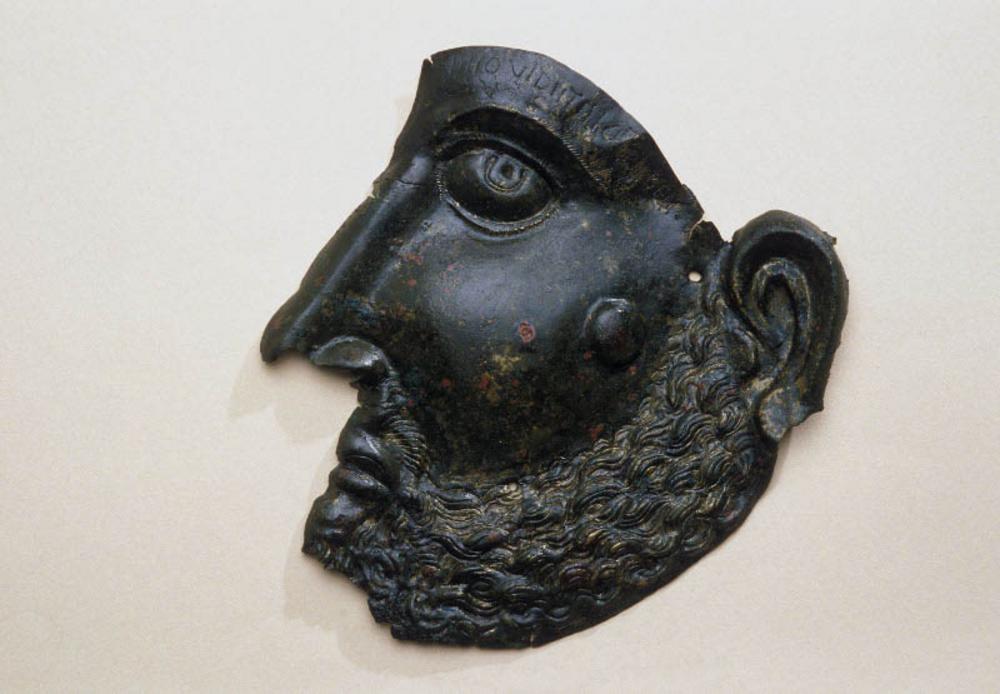
(5/ )
Early Imperial [27 / 235]
Visible wart
On this copper alloy plate is a male face in profile. Despite the careful rendering of detail, this is not a portrait, as similar depictions are known on the visors of ceremonial helmets dating from the Roman period. The identity of man is however materialized by the presence of a growth on the cheek. The inscription indeed allows us to assume that this object was offered by a certain Gellius Bellus to the Gallic god Videtillus to thank him for having rid him of this anomaly.
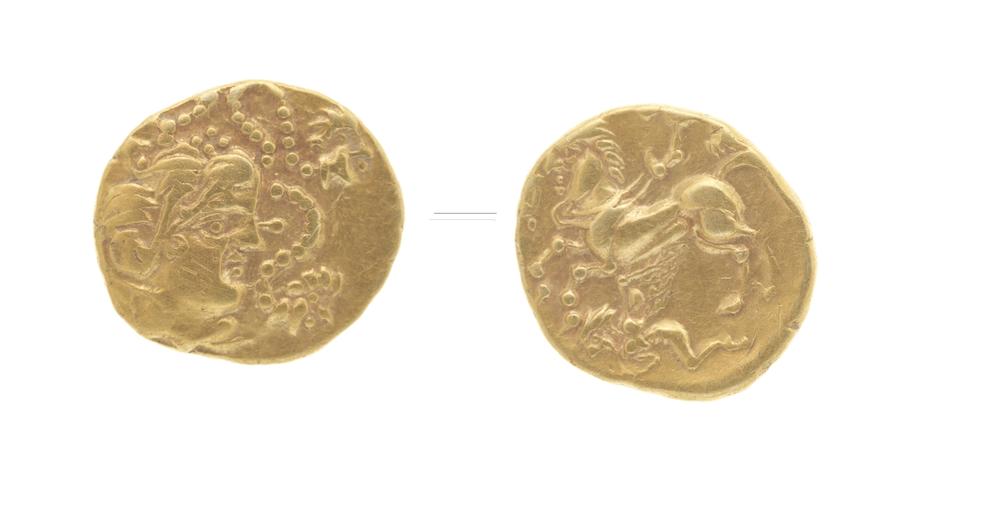
(6/ )
Protohistory [- 2200 / - 50]
Averted portrait
In the 3rd century BC, in order to trade, the GAaulic people abandoned the practice of bartering, and introduced the use of coins. The first coins created by the various Gallic peoples imitated those made by the Greeks and Romans, but they were fashioned in the Gallic "fashion". On the left, a head in profile is shown surrounded by beaded cords. This face refers to the portraits of emperors that circulated on Roman coins. On the reverse of the coin, on the right, a horse rides a winged figure, an allegory of victory. Aso, this coin finds its origin in the coins of King Philip II, which featured the portrait of the Macedonian king on one side, and a chariot on the other.
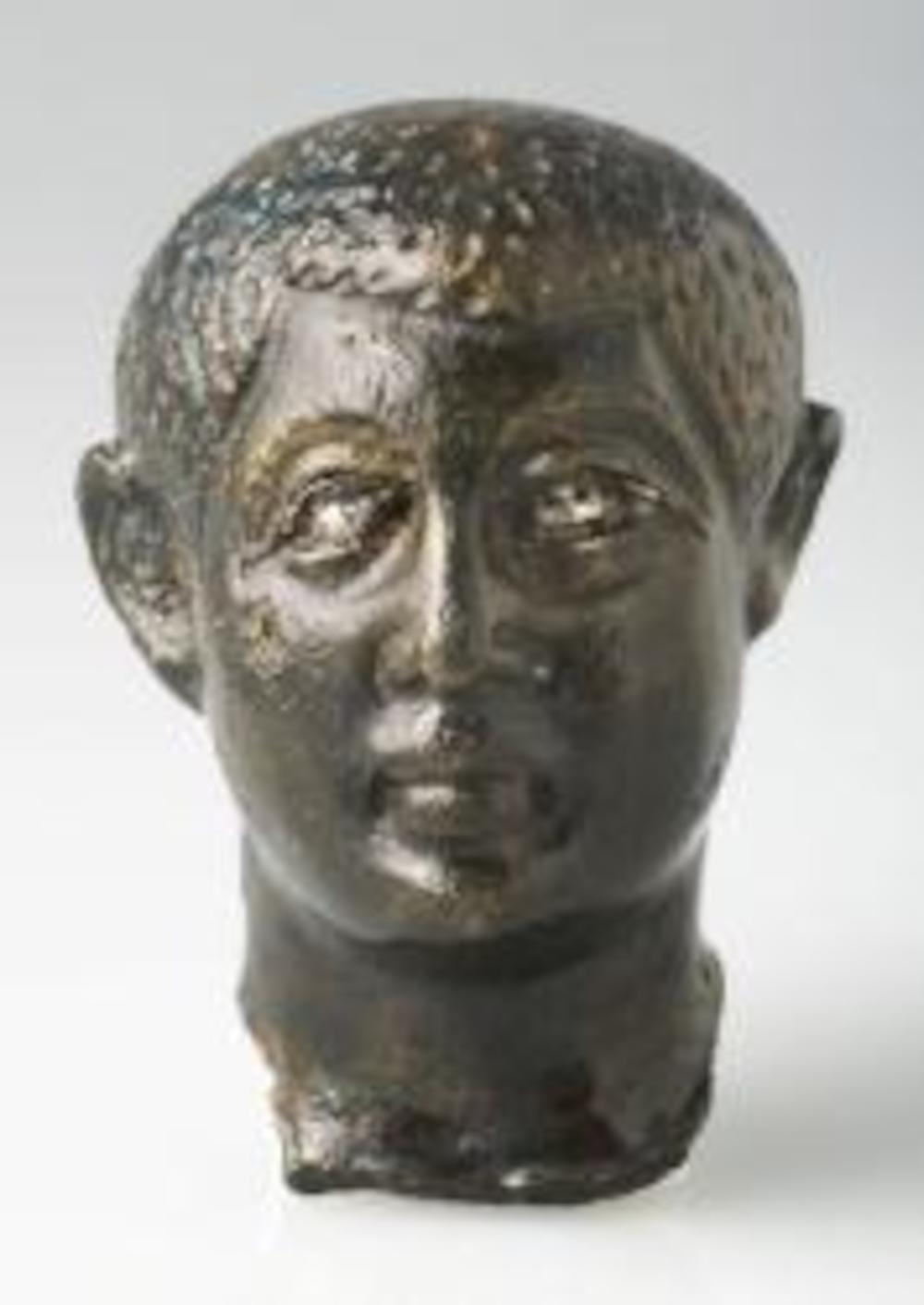
(7/ )
Bas-Empire [235/ 476]
Face dimensions
This copper-alloy head probably belonged to a male quartet. The use of the recessed casting technique allows for a careful and realistic rendering of the facial details: softly shaped cheeks, hemmed mouth, and finely outlined eyes. These delicate features were once animated by two inlaid pewter pupils, now gone. The plastic quality of the artist's work and the use of metal, an expensive material, place this head in a luxury production. The context of discovery reinforces this hypothesis: this object indeed comes from the burial of a young girl from the Gallo-Roman aristocracy of the Late Empire.
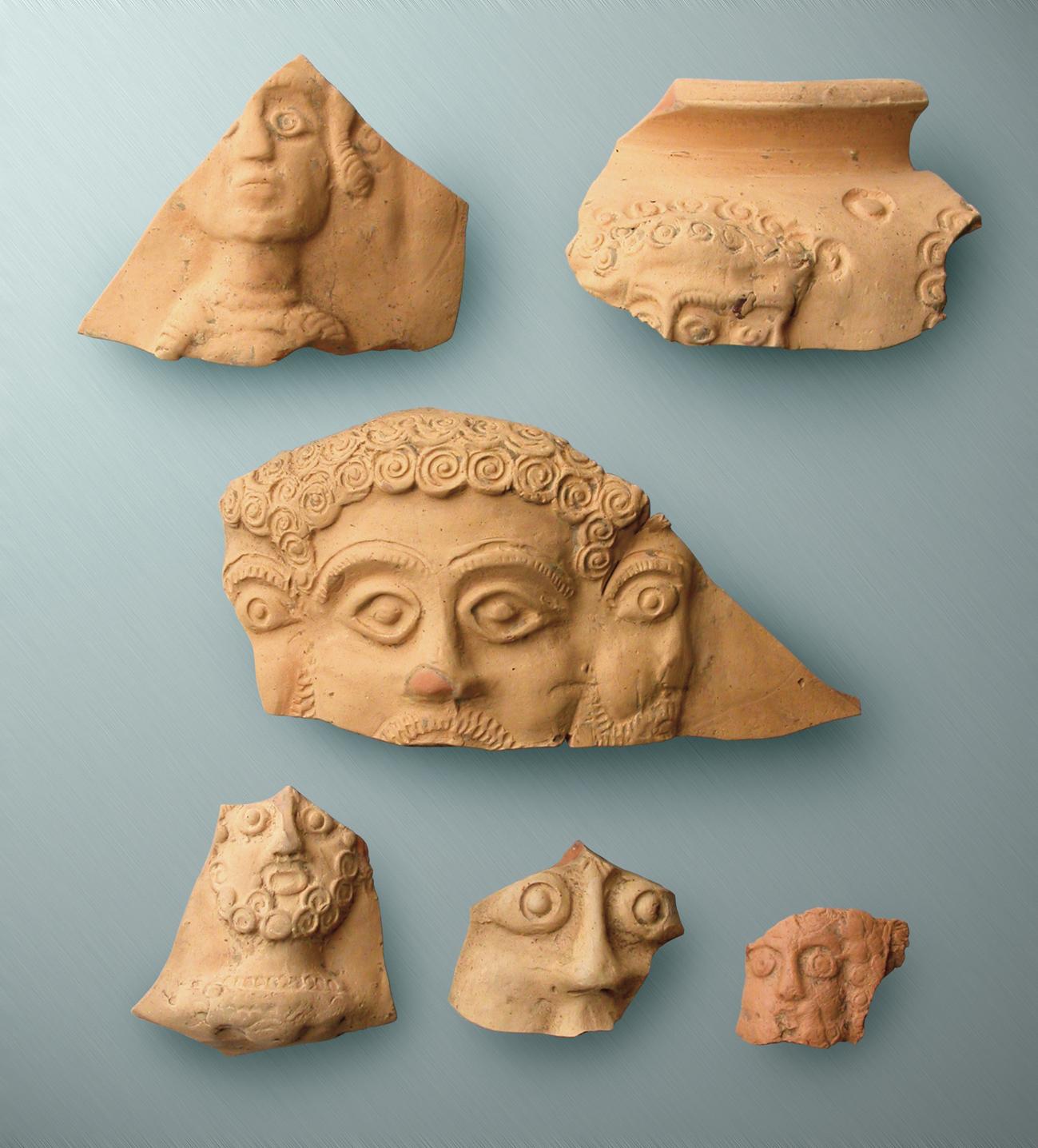
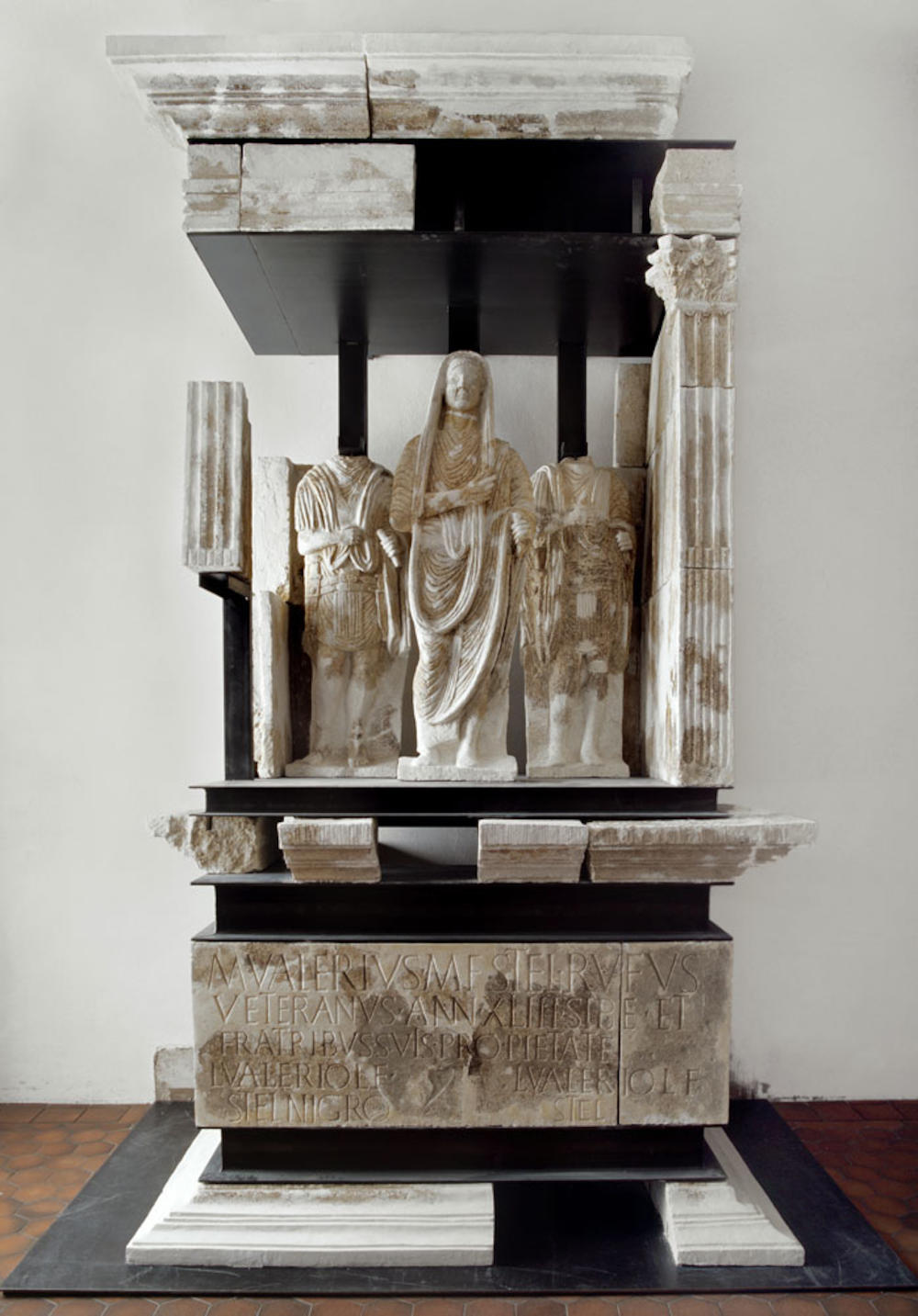
(9/ )
Early Imperial [27 / 235]
A face for eternity
This mausoleum features three deceased members of the same family in an architectural niche. Only one face remains, that of the central deceased, dressed in the toga of the Roman citizen. Highly prized by the Roman bourgeoisie, these monuments show family groups eager to show future generations the place they occupied in society during their lifetime. The deceased are thus usually dressed in costumes reflecting their function, while their faces appear stereotyped.
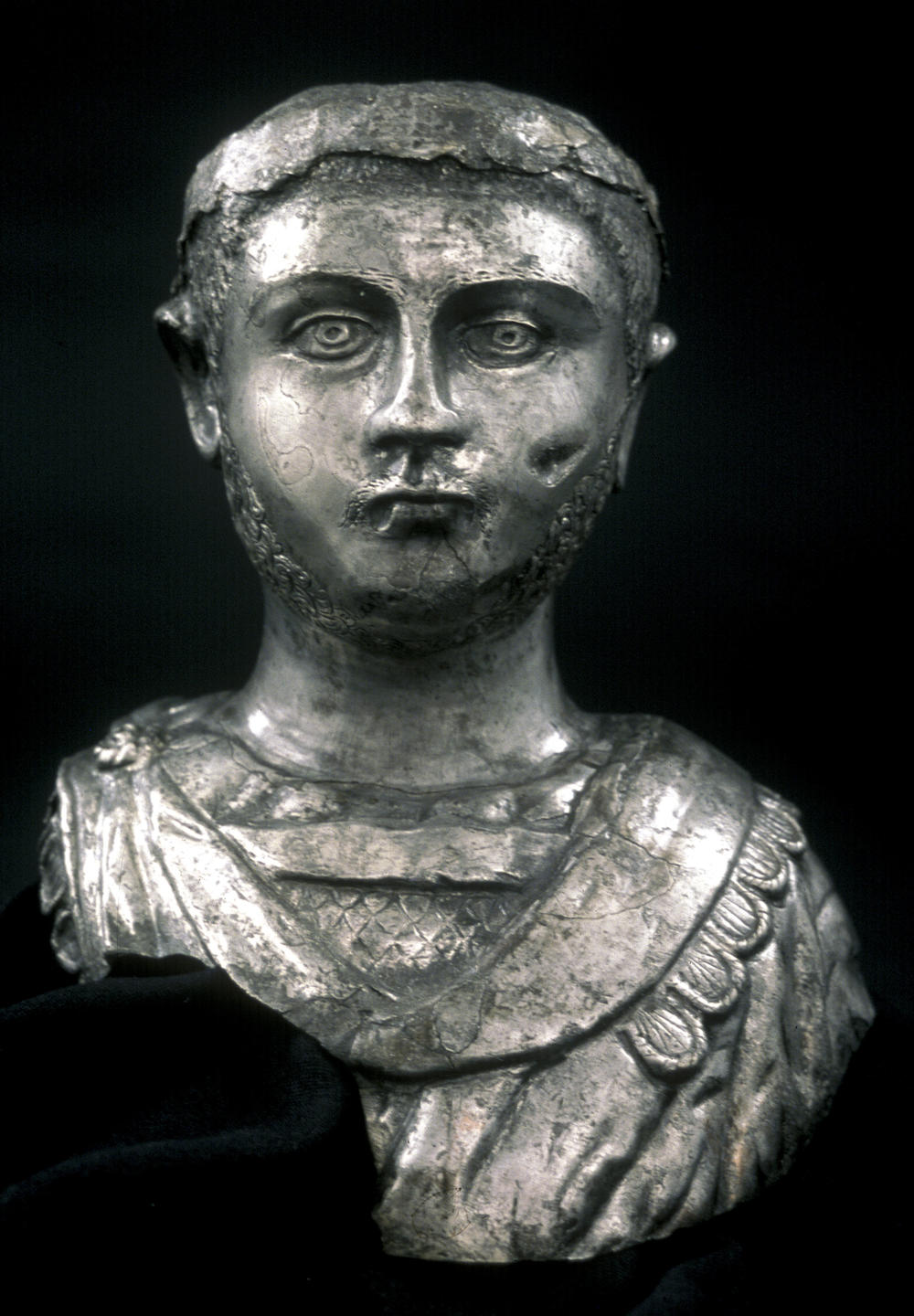
(10/ )
Bas-Empire [235/ 476]
Omnipresence of official portrait
The laurel wreath and military costume make it possible to recognize a Roman emperor here. This would be Gallien or Caracalla, but the personal features - the massive head, mustache and beard - fade away in favor of the function. Small in size and made of precious metal, this statue may have been given by the emperor or financed by wealthy citizens of Lyon. The face of the emperor was displayed in public places but individuals could also own a private representation, showing their loyalty.
Treasury of Vaise political figure (military leader) Details on the subject: bust of a rather young man, wearing a cuirass and a military coat (paludamentum). Face with very regular features, with a very slight shape; he has a beard and a short moustache. On the thin hair, a crown of foliage (laurel?). The coat, decorated on the shoulders with elements in the form of tongues, is clasped on the right shoulder by a large circular fibula. Under the coat, a flexible cuirass with scales, bordered by a wide, more rigid band around the neck. It could be the emperor Gallien (reign: 259-268)
.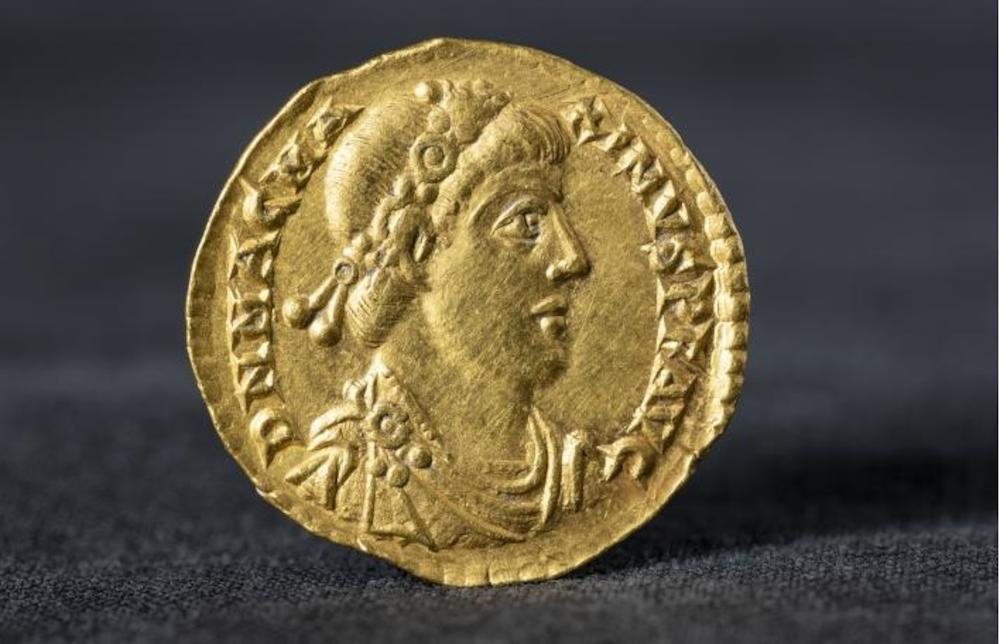
(11/ )
Bas-Empire [235/ 476]
Download your image
Roman coins allow for the dissemination of the imperial image. Magnus Maximus is shown here in profile, in bust form. He wears the diadem, the toga and the cuirass, emblems of his function. The physical appearance of the character is partly reproduced: elongated face, straight nose. Certain details, such as the roundness of the eye, are more in keeping with the artistic conventions of the Late Empire. The Roman portrait is here halfway between the realistic representation of the individual, and the idealized representation of imperial power.
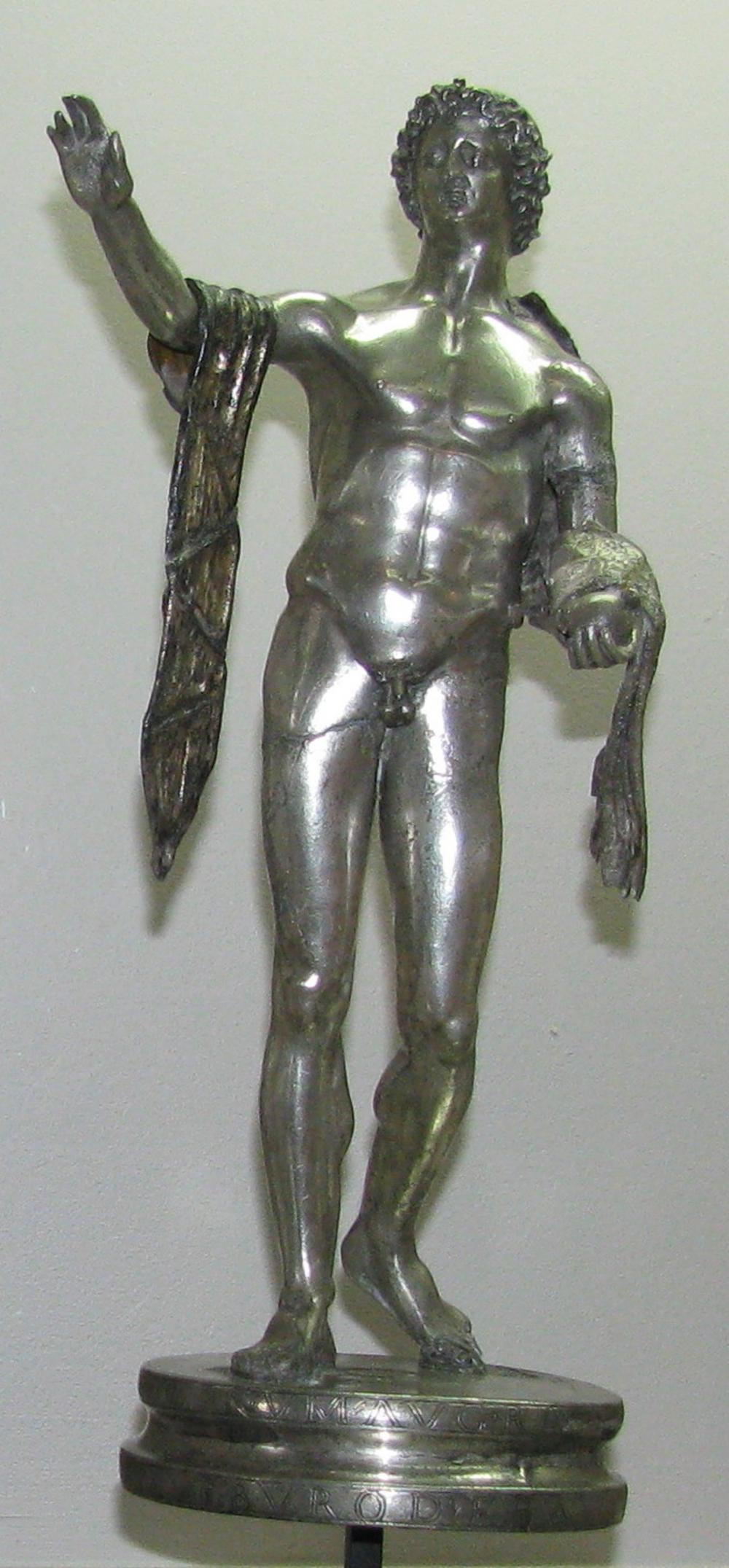
(12/ )
Bas-Empire [235/ 476]
A god with a human face
In Gallo-Roman mythology, the gods take on the appearance of human beings and are recognizable from a few characteristics or attributes. Here the figure is naked, muscular, young-looking, with long, curly hair. He holds a small globe in his left hand. A cloak is thrown over his shoulders and covers his arms. This is Helios, god of the Sun personified among the Greeks, likened to Apollo among the Romans. He is the god of life and creation, source of life and regeneration.
Piece belonging to the Lyon-Vaise treasure

(13/ )
Early Imperial [27 / 235]
The Face of Love
Cameos are small objects made of stone or glass paste with carved or molded decoration in slight relief. Closely associated with the field of adornment, this production was developed by the Romans and spread to Gaul from the time of the High Empire. The iconography often draws from the Greek-Roman mythological repertoire. Here, the combination of a childish face with full cheeks and a pair of wings, no doubt allows one to recognize Éros, the personification of love desire.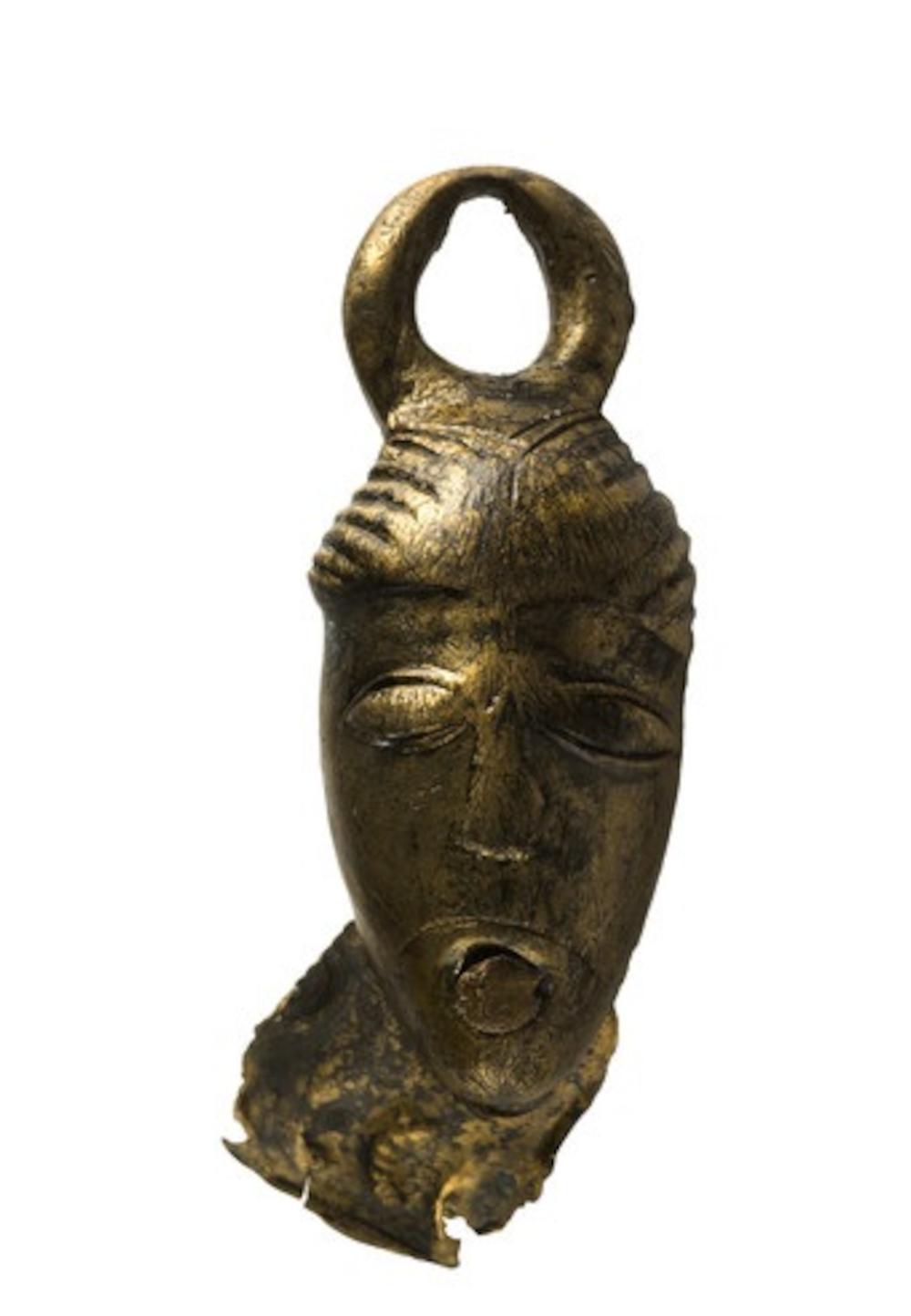
(14/ )
Iron Age [- 800/ - 50]
Prestigious head
This bronze element was used to attach the handle to the top of a bucket. The face that adorns it is schematic, except for the hair, which is carefully incised. The head is a recurring motif in Celtic art, especially in IIe and Ifirst centuries BC-C.: it decorates weapons, ornaments and everyday utensils. Its importance raises questions: are they divinities, of prestigious windows, or even of chiefs? This motif could also refer to the severed heads of enemies, which the Gauls brought back from the battlefield.
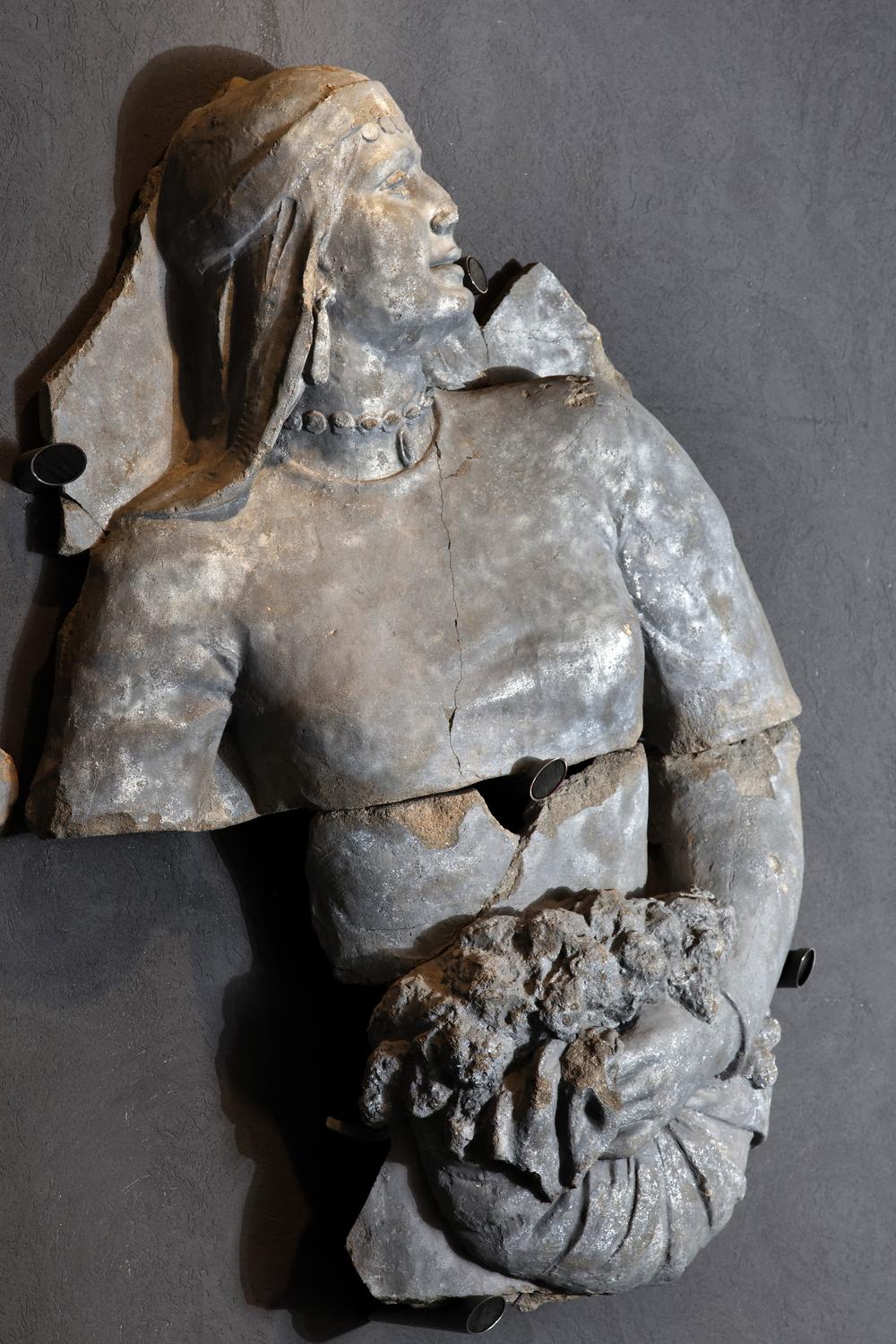
(15/ )
Contemporary period [1789 / nowadays]
The Face of Nations
The woman pictured wears the traditional finery and clothing of Azerbaijan and clutches a cotton bale, a typical crop of the country, in her skirt. The body tense with work is opposed by a serene face, with regular features and a proud expression. Allegory of the Azeri people, the figure was inserted into a monumental frieze, consisting of eleven couples representing the unity and smooth functioning of all the socialist republics of the USSR.
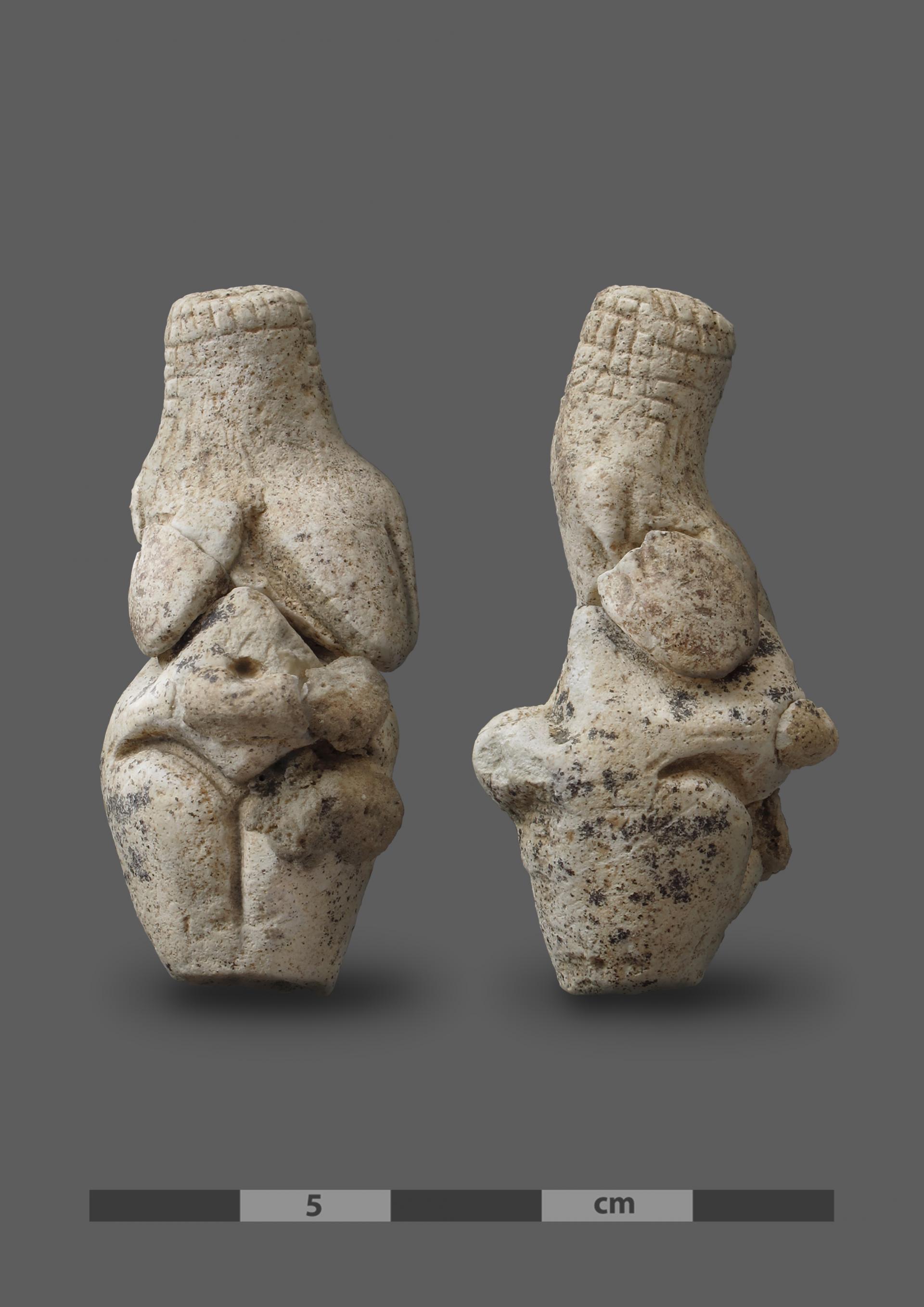
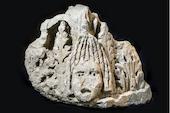

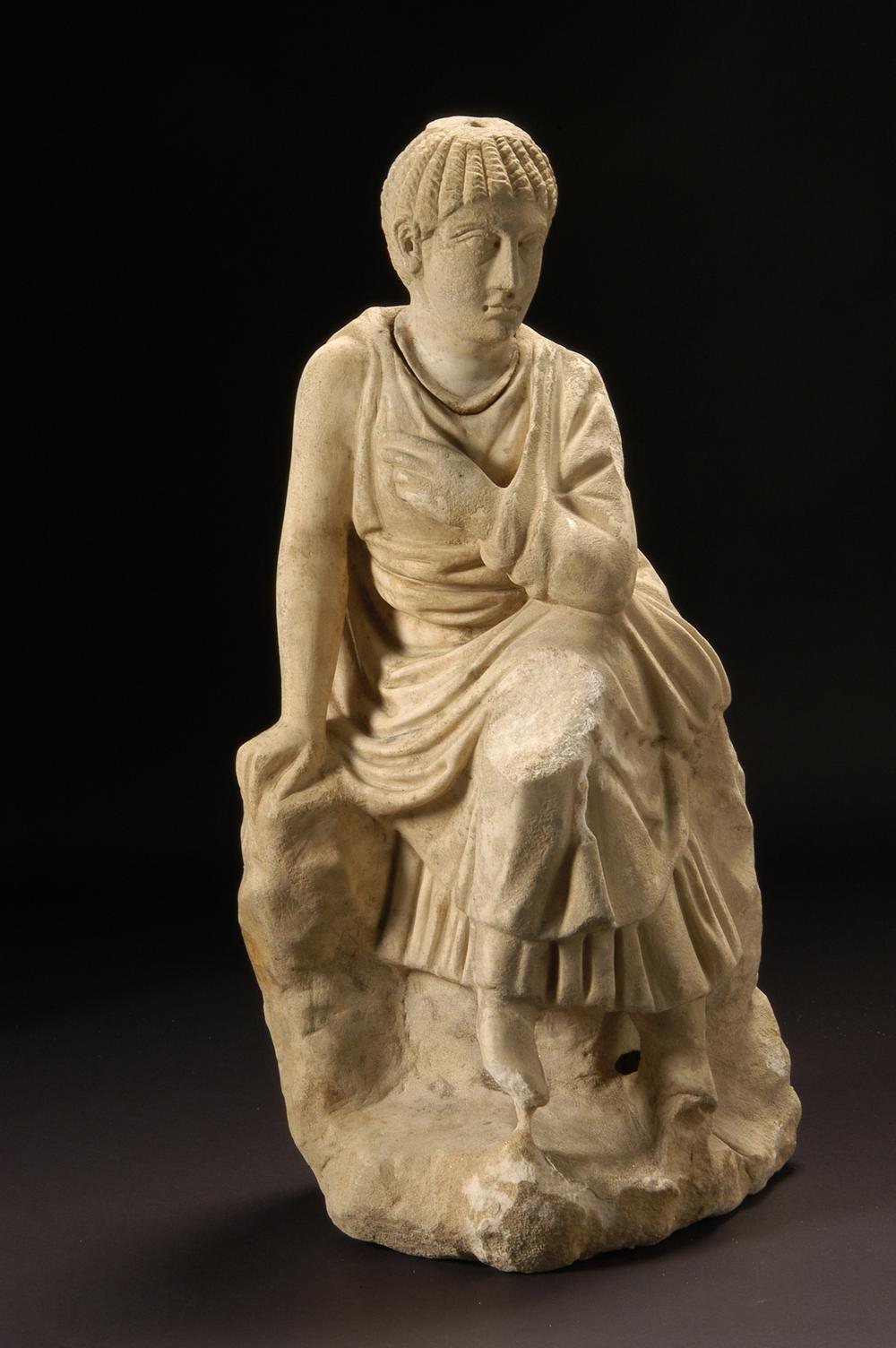
(19/ )
Early Imperial [27 / 235]
From the face the melancholy
Seated in a complex attitude, this young girl is akin to a group of sculptures depicting seated figures, the earliest examples of which date back to the Classical period (in the image of the seated Penelope or the Suppliante Barberini). His hairstyle, known as "melon ribs," was particularly fashionable in the 2nd century in the Empire. The strands were to meet in a bun, which has now disappeared, at the top of the skull. With her eyes lost in the distance, the girl's face is animated by a vague melancholic expression. This calmness contrasts with the intricacy of the draperies and hair, reinforcing the decorative effect of this sculpture, which must have adorned the garden of a wealthy Roman residence.
(20/ )
Modern period [1492 / 1789]
Guiding to Faith
Richly dressed in the fashion of the early sixteenthcentury, St. Magdalene is identifiable by her attribute: the perfume jar containing the oil with which she washed the feet of Christ. On the back, the statue is hollowed out at the bottom: it must have been installed against a pillar or column, and certainly high up, sinceshe is looking downwards. The expression on her face, with its pensive look, invites meditation, personal recollection and prayer from one who was entering the religious building where it was exhibited.
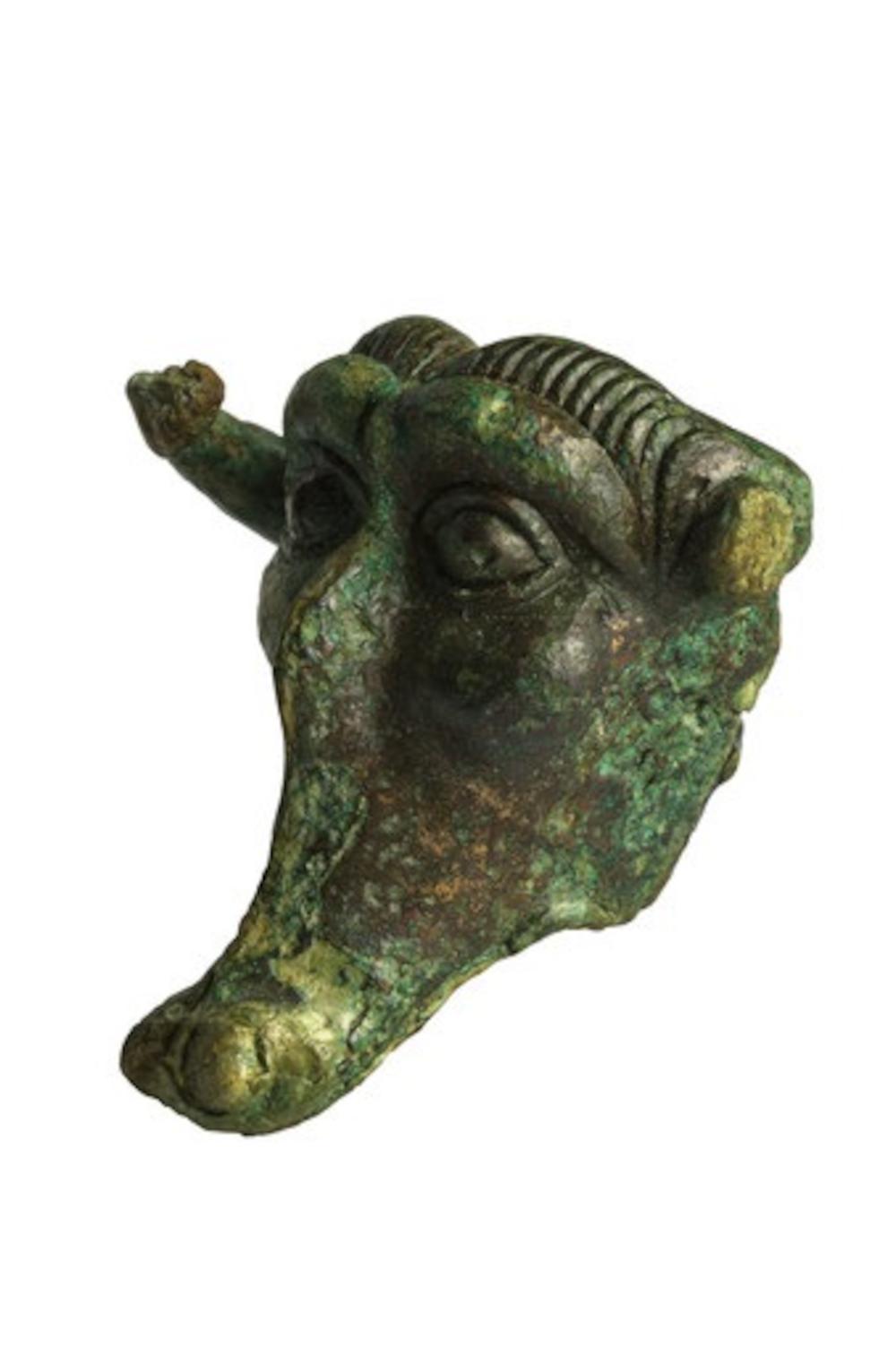
(21/ )
1st Iron Age [- 800/ - 480]
Powerful hybrid
This figure would have been arranged on one of the guides of the carriage of a chariot deposited in a Second Iron Age tomb. This zoomorph face, with a long goatee and horns, evokes to Celtic mythology, strongly influenced by the Greco-Roman pantheon. Indeed, this metal element is similar to the heads of the river-god Acheloos that adorned the cauldron discovered in an Iron Age chariot tomb at Lavau. Thus placed on the chariot, this effigy was to bring divine protection to its owner, as well as much prestige.
The grave at Orval (Manche) is today a unique case: the westernmost of the late Early La Tène "chariot graves" ever found in Europe.
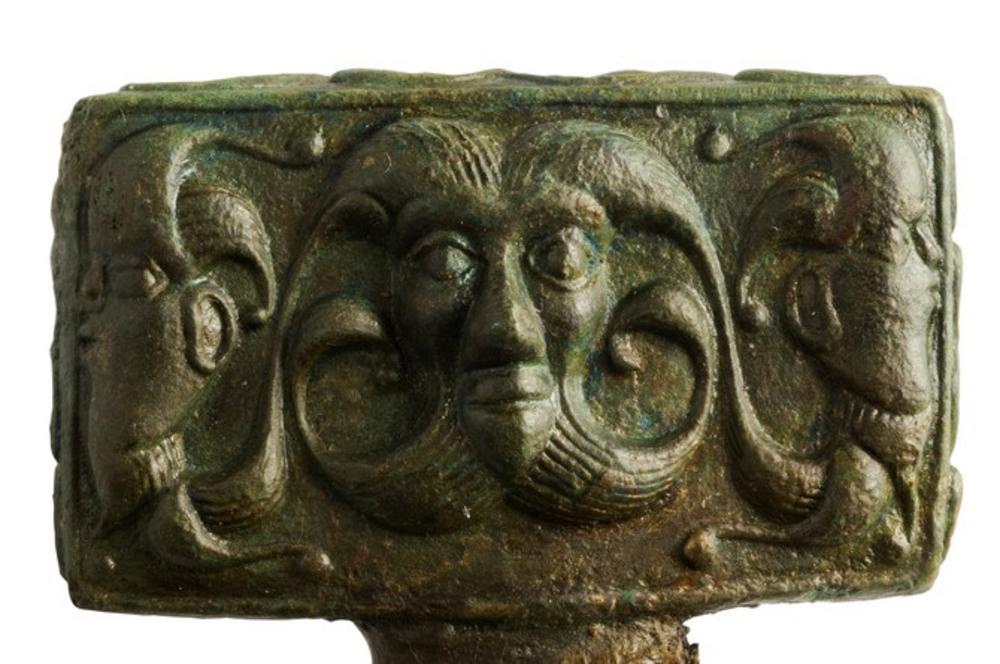
(22/ )
Iron Age [- 800/ - 50]
Face and profiles, for complete protection
This chariot element features bas-relief decoration consisting of a central mask framed by two similar heads shown in profile. The symmetry of the image and the decorative treatment of the plant-like hair and beard are typical of early Celtic art. The function and significance of this decoration remains unclear, but its quality illustrates the high degree of artistic development of objects associated with princely tombs in Western Europe during the Second Iron Age.
The grave at Orval (Manche) is today a unique case: the westernmost of the late Early La Tène "chariot graves" ever found in Europe.
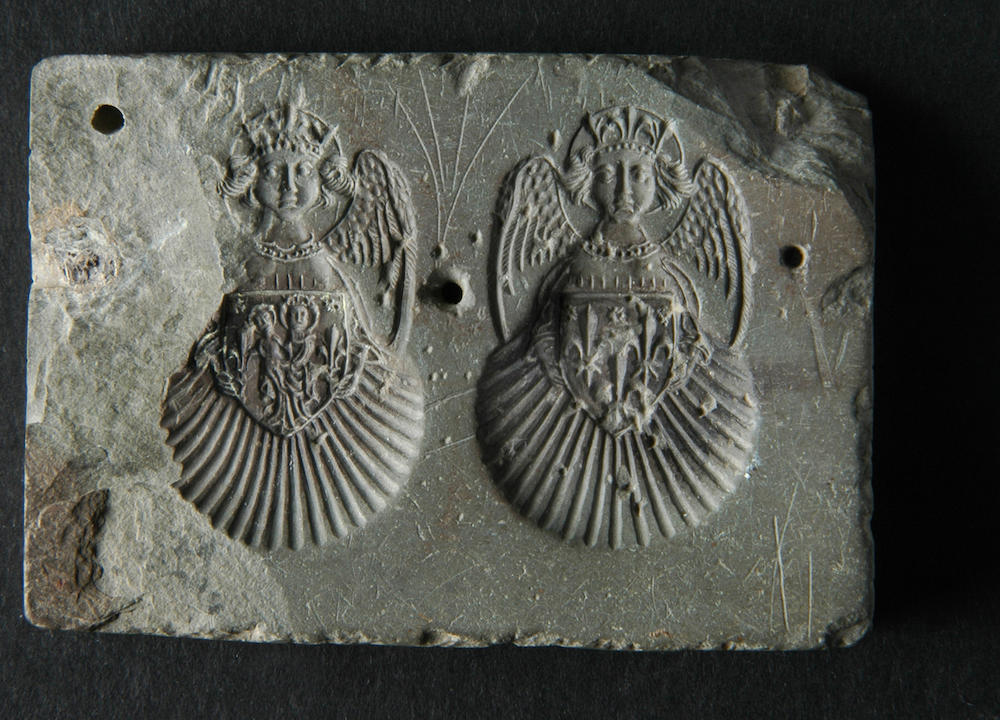
(23/ )
Late Middle Ages [1300 / 1492]
Under the gaze of the archangel
This stone mold was used to cast lead plates called signs, worn by pilgrims on their clothing as a souvenir of their journey. The face of St. Michaelis associated with the shell, evoking the fauna of the bay of Mont Saint-Michel. The saint's shield bears, on the face, a Virgin and Child, on the reverse, the arms of France. While most signs depict St. Michael triumphing over evil, this design is limited to the saint's face, a concentration of his protective powers.

